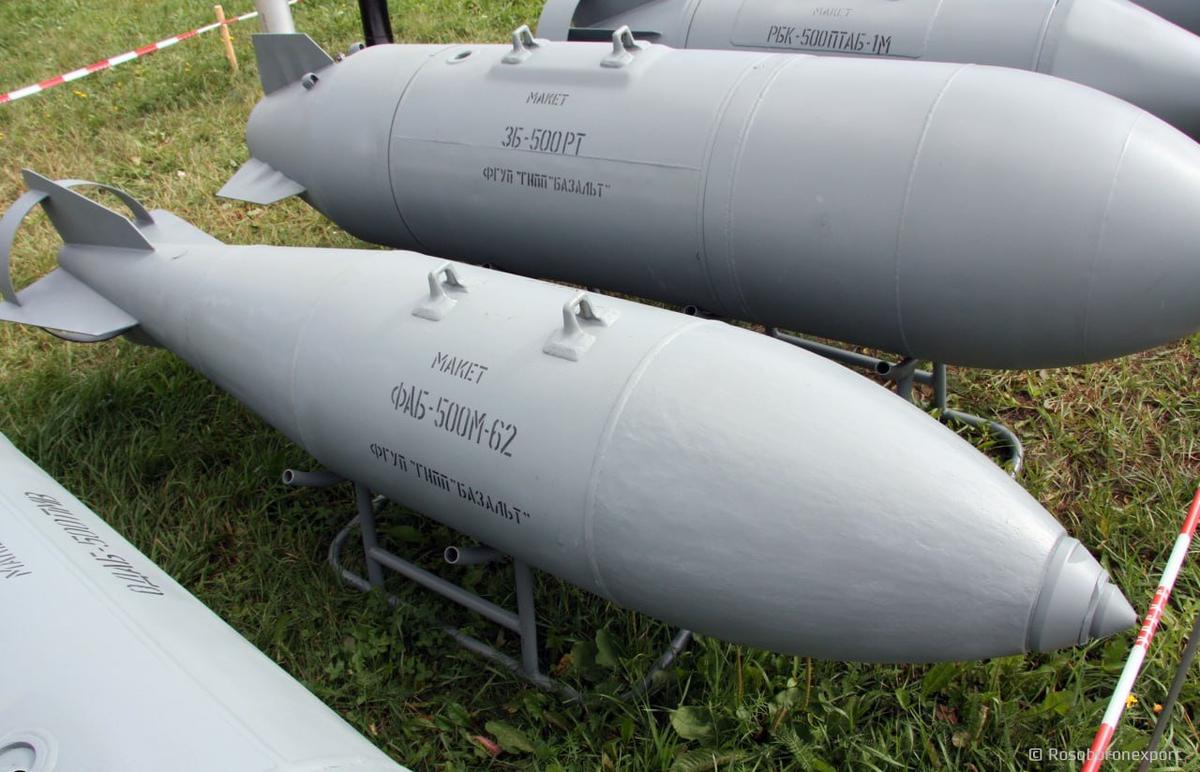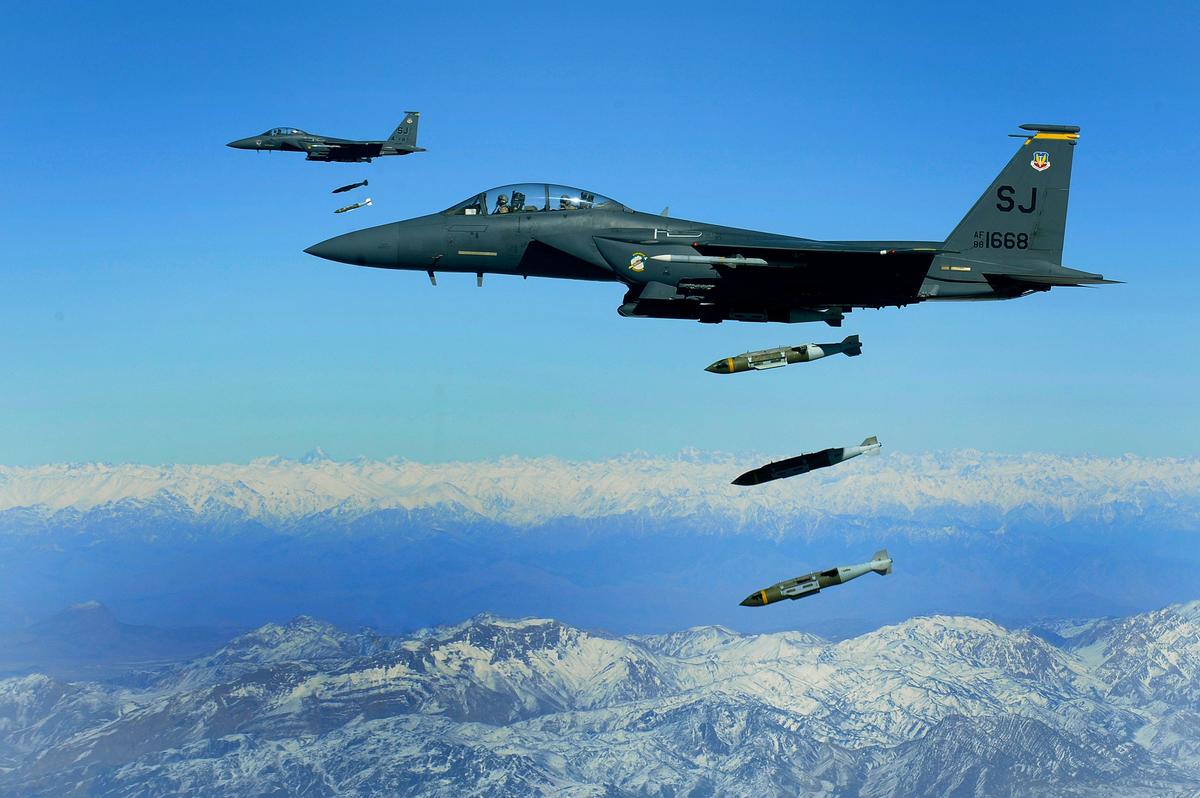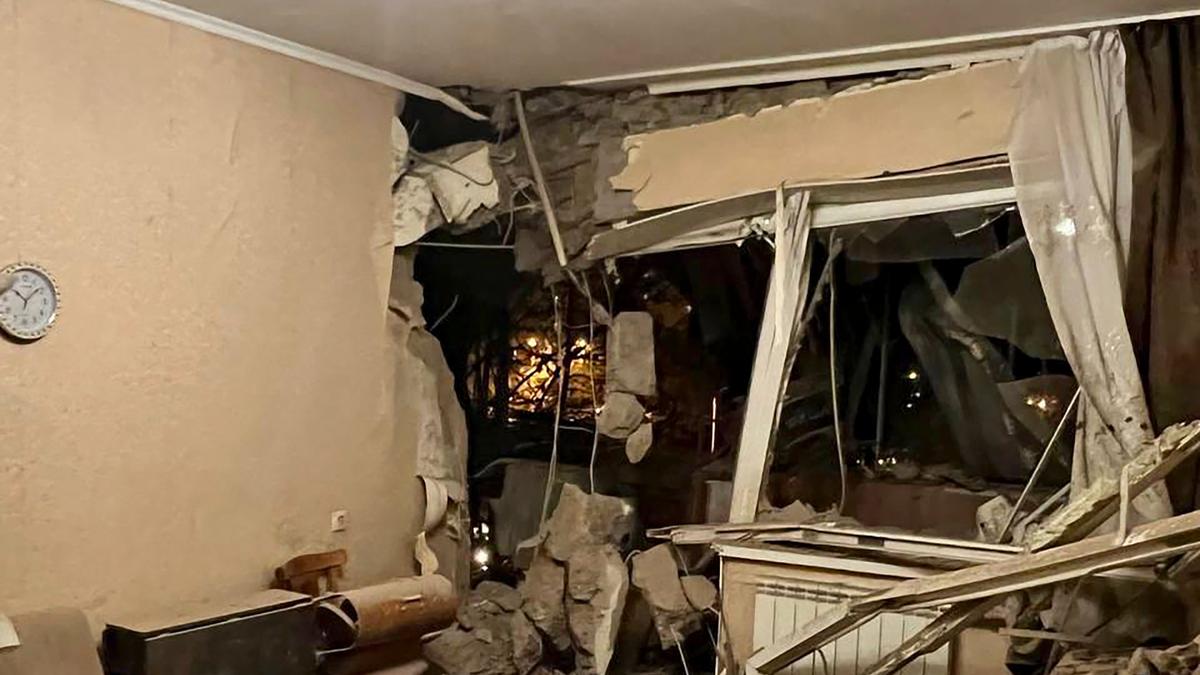Yesterday, 20 April, at around 10 PM local time, a powerful explosion rocked the Russian city of Belgorod, leading to a 20-metre-wide crater being formed.
‘Undue going off of munition’
The blast wave threw one of the cars parked nearby to the roof of a neighbouring shop. Several other cars were damaged. Windows were shattered in surrounding buildings, with several flats suffering severe damage. Some power lines poles fell down.
Governor of the Belgorod region Vyacheslav Gladkov said that an “explosion occurred” in the city, later clarifying that three people were wounded — one of them refused hospitalisation. According to Russia’s Defence Ministry, a Su-34 jet was flying over Belgorod and was subject to an “undue going off of an air-delivered munition”.
Before the explosion, pro-Russian Telegram channels were reporting that Russia had been preparing to bomb Ukraine. For example, Telegram channel Veterans’ Notes wrote that Russian aviation had taken off in the air and was “equipped with FAB-500” (high-explosive air-dropped bombs).

Replica of a FAB bomb. Photo: Telegram
“Judging by the size of the crater and the fact that a car ended up on the roof of the shop, the aerial bomb weighed from 500 to 1,500 kg,” military expert Kirill Mikhaylov explains to Novaya-Europe. “Furthermore, we could be talking not about a free-falling bomb but a munition equipped with a universal planning and adjustment module (UPAM). This new type of Russian weapon emerged about two months ago and has been actively used in the last weeks. Russia’s Ministry of Defence is trying to keep these bombs under wraps, even what they look like.”

F-15E Strike Eagle of the US Air Force, part of the 336th Fighter Squadron. Photo: Wikimedia Commons
According to Mikhaylov, Russian UPAM is similar to American JDAM, which is used to convert unguided bombs into high-precision ones. A bomb like that, launched from a considerable height and at high speed, can be adjusted for several dozen kilometres and strike targets in the given coordinates. It is now easier for Russian aviation to hit targets located outside of the Ukrainian air defence zones. Still, no matter how “high-precision” these bombs are claimed to be, they hit civilian facilities, too. Mikhaylov says that while carrying out strikes on the Kharkiv region of Ukraine by launching UPAM bombs, Russian jets remain in Russian airspace and often fly over Belgorod which is located near the Ukrainian border.
According to our interlocutor, there is no point expecting the Russian Ministry of Defence to publish the results of their investigation into this incident. The state body will, as always, try to conceal all information. It is surprising that Moscow even confirmed the fact of a Russian bomb falling on a Russian city at all.
“Something went wrong,” Kirill Mikhaylov continues.
“We’re talking about a relatively new and quite technological type of weapon. The bomb could’ve broken away from the jet without the pilot’s command.”
“Or the launch went off as planned, but for example, the mechanism of UPAM wings opening did not work properly, which led to the bomb falling down on the city. Issues and defects happen with any kind of new weaponry. Could be that this is not the last incident like this.”
Moreover, Mikhaylov says that as of now, Ukraine does not have the capability to shoot down UPAM bombs. In this situation, Ukraine could use F-16 fighter jets which the country has been asking for from its Western partners for a long time. These aircraft would allow Ukraine to use air-to-air missiles to attack Russian jets at a great distance.
Support independent journalism
Not the first time!
“Judging by the size of the crater, it was a half-tonne bomb like FAB-500,” military pilot instructor, colonel of Ukraine’s Armed Forces Roman Svitan tells Novaya-Europe. “It couldn’t have been an accidental drop — there are several fail safes installed for that scenario. I see two alternatives.
An unsanctioned drop of the bomb could have occurred as result of an unexpected triggering of release mechanism or hooks breaking. Which could happen, for example, due to a sharp manoeuvre
with an impermissible overload. More likely this is the newest Russian invention — a smart bomb with wings that allow to set targets at a considerable distance. Such a package could have been used on the FAB-500, too. This is a “raw” weapon. Similar incidents have happened before. About a month ago, an aerial bomb was discovered in Donetsk, and these little wings not far away from it. It’s clear that after the hastily-made control and adjustment module had broken away, the bomb fell vertically down.”
This is how pro-Russian social media pages described the incident with the aerial bomb in the self-proclaimed Donetsk “people’s republic” on 12 March 2023: “An unexploded aerial bomb FAB-500 was found in Donetsk; it fell from a Russian jet following a technical issue. However, the most interesting part is that a control and adjustment block that converts an unguided bomb into a high-precision one was found 500 metres away from it. Most likely, the block separated from the bomb while falling and hitting the ground. Also, the photos clearly show the wings.”
Roman Svitan is certain Russian pilots carry out the launch of guided bombs in the aerospace of Belgorod while aiming at targets in Kharkiv — it is the most convenient location for the task.
Join us in rebuilding Novaya Gazeta Europe
The Russian government has banned independent media. We were forced to leave our country in order to keep doing our job, telling our readers about what is going on Russia, Ukraine and Europe.
We will continue fighting against warfare and dictatorship. We believe that freedom of speech is the most efficient antidote against tyranny. Support us financially to help us fight for peace and freedom.
By clicking the Support button, you agree to the processing of your personal data.
To cancel a regular donation, please write to [email protected]

